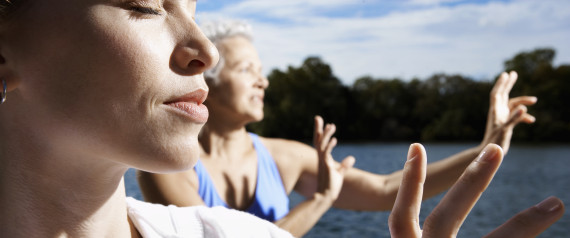Health Benefits of Tai Chi and Qigong
I want to tell you a little about myself before I launch into some of the possible health benefits of Tai Chi and Qigong.
I am a physician. I attended Dartmouth Medical School. I trained as a pediatrician at Duke and then trained as a psychiatrist at Mass General Hospital. I was happily seeing patients and raising my then 13-year-old twins when I was diagnosed with a unique autoimmune disease in 2005 and smoldering multiple myeloma in 2008 and my life got turned upside down.
I have lived now for 10 years with an autoimmune disease that defies diagnosis and a blood marker for multiple myeloma that required repeated bone marrow biopsies. Mercifully, Enbrel has kept me out of pain and the multiple myeloma markers have been stable and have actually decreased. The doctors removed the diagnosis of smoldering myeloma and now have returned to calling it monoclonal gamopathy of unknown significance (MGUS).
I have learned some things through this journey that I never learned in medical school. I learned to trust my instincts and listen to what my body was telling me. I began to apply my scientific mind to pursuing the discovery of what helps me, and I have tried to pay exquisite attention to the feedback I get from my adventures. I shifted from giving lip service to the concept of mind-body to a really trying to understand what it means in theory and in practice. This is how I came to study Qigong and Tai Chi and why I now teach these ancient healing techniques.
Let me be very clear. It is not a choice between Eastern and Western medicine for me, only medicine that works. I am grateful for the relief that Enbrel provides. I meet with my rheumatologist and my hematologist and listen to their counsel. I have been able to significantly reduce the dose of the medication from 50 mg to 12.5 mg, and my doctors tell me at every visit… keep doing what you are doing.
I do Qigong or Tai Chi every day. I think of it as medicine, too. Can I say for sure that it has worked for me? Not with a double blind study, but I do believe that my investigations have led me to a plan which has helped me and maybe could help you, too. At my last visit my rheumatologist told me that the Tai Chi and Qigong have probably helped my bone density stabilize at osteopenia. Let me tell you some of what I have learned through my experience.
Calming the mind and calming the body allows healing. Strengthening the muscles through simple postures and movements prevents falls. Moving with flow and gentle weight bearing helps balance and can positively impact bone density. Achieving a relaxed state of the mind reduces stress. These are some of the simple premises that underlie the health benefits of Qigong and Tai Chi.
My teacher, Dr. Ming Wu, introduces tai chi walking during the first beginning tai chi class because he believes it is much simpler to learn and done properly achieves all of the benefits of a much more complicated tai chi form.
Qigong is an ancient Chinese health care system that integrates physical postures, breathing techniques and focused intention to open blockages in the body based on the same meridian system used in acupuncture. The movements are fairly easy to learn and allow access to everyone. To begin to benefit from Qigong you do not have to be fit, you don’t have to be flexible; you don’t even have to be able to stand up. The exercises can be modified for almost anyone with patience that wants to learn.
Sometimes Qigong and Tai Chi are called a moving meditation in which the mind and body are led to a state of balance and equilibrium also known as homeostasis. AHarvard medical publication said it should also be called “moving medication.” The advantages of improving strength, flexibility and balance are pretty obvious but the advantages of peace that comes from the moving flowing meditative aspect of Qigong and Tai Chi are equally important.
When the body is in a state of balance all the systems work better.
Much of the tendency to this internal balance is happening all of the time totally out of our awareness. With very little conscious input from us, our bodies are working to keep us in a state of homeostasis, that is, everything just so. The fight-flight reaction vs. the relaxation response is an example of the body tending toward homeostasis.
But in our stressed out world many of us are living in a continuous state of stress without even being aware of it. Without practice the relaxation response doesn’t always occur. Qigong and Tai Chi can help us return to homeostasis and the relaxation response.
In addition to our tendency to stress there is a second profound tendency to move less as we develop physical limitations. Often the two occur together but either alone can lead to a downward spiral.
The health benefits from Qigong and Tai Chi comes about both by supporting the body’s natural tendency to return to balance and equilibrium and also gently yet profoundly creating strength, flexibility and balance in the muscles and joints through gentle flowing movements. This is the winning combination: body and mind. The physical and mental practice continuously supports the return to balance.
This is an exercise that requires no equipment. It can be done anywhere, inside or outside. It has a track record of thousands of years and shares much in common with yoga but many find it less difficult and you don’t have to get on the floor!
